And the winner is…frog fruit!
Heat be damned! I spent an hour sitting in the miracle prairie because I couldn’t wait to see what was going on in there. Lots. But I didn’t get any photos. No one stood still long enough. Everyone was looking for something to eat. And since almost everyone is also edible, everyone hustled.
I positioned myself so that I could get good photos of whoever visited a stand of common sunflowers. Since those were big and showy, I assumed they would attract the most insects. Wrong. They did attract the most leafcutter bees. In our Park, you will almost always find leafcutter bees on common sunflowers. I cannot tell you why. Others visit, but leafcutters are always there.
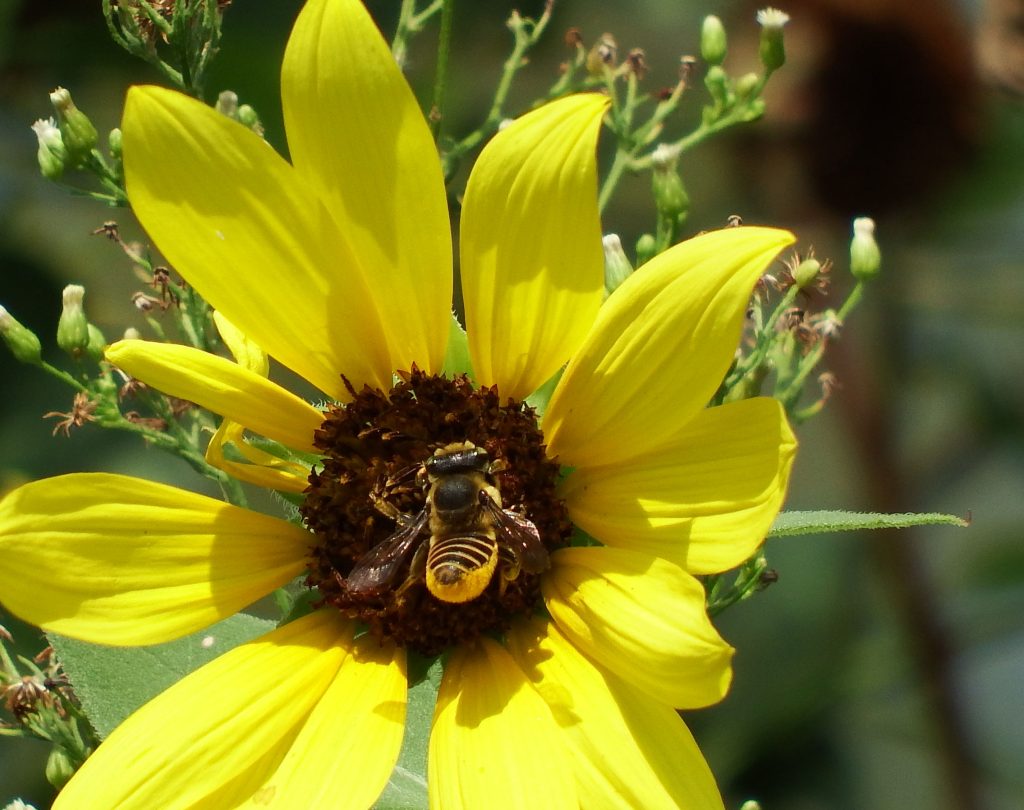
Notice how yellow the belly is on this leaf cutter bee. Leafcutters are the only family of bees to collect pollen on belly hairs. If a bee has belly hair or a bright yellow pollen belly, you have a leaf cutter.
Turns out, the vast majority of insects that visited during the hour I spent, visited frog fruit. And they didn’t linger. They were smart, because every ten minutes or so, a squadron of dragonflies would soar through my patch at about 4 feet off the ground. They didn’t stop for photos either. They were hunting and were one of the reasons those sipping pollen from frog fruit didn’t linger and stayed low.
Jumping into the food fest were barn swallows that swooped and soared, although they spent more time over the water than over the prairie.
Frog fruit is a low-growing plant. In your garden, it would probably be classified as ground cover. In the prairie, it was scattered everywhere, but the flowers were often obscured from my camera by taller surrounding foliage.
The Park is full of frog fruit, however. It grows in large patches near the paths. I stopped at one patch after the prairie sit and there were so many insects visiting at breakneck pace that I stopped trying to photograph anything in particular. I just focused on a patch of flowers and snapped the shutter a few times. There were insects in the frame almost a quarter of the time. That’s a powerful pollinator.
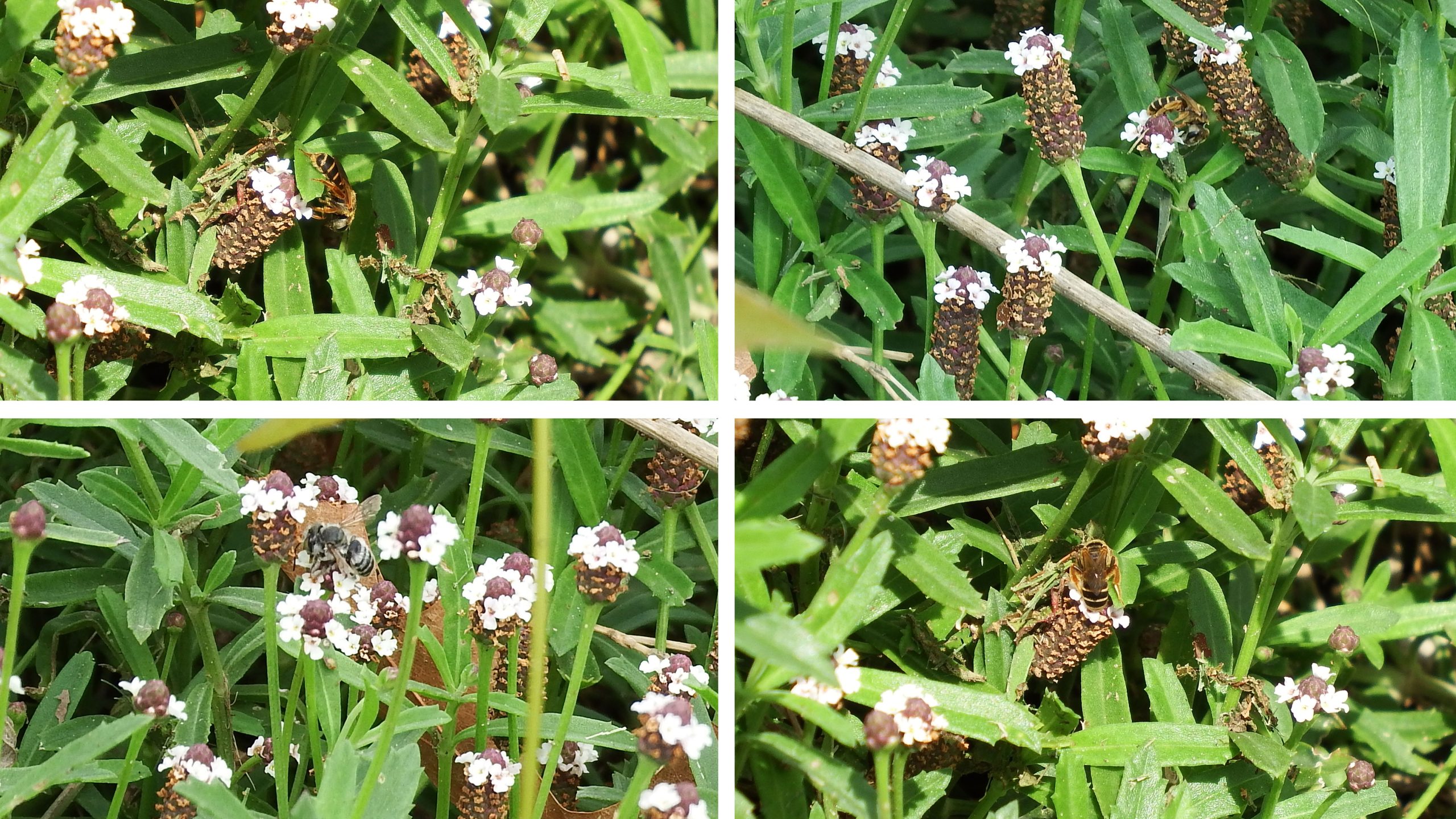
The bees on this patch of frog fruit were so fast, the only way I could photograph them was to randomly photograph the flowers and hope to accidentally catch some bees. I did about a quarter of the time. It’s a bit of Where’s Waldo but there is a bee in each photo above.
I have been a frog fruit fan for some time. In looking at this late-season frog fruit, I wonder if one of the reasons it’s so popular with pollinators is that it can really be counted on. In the spring, the frog fruit bloom is a little button of white flowers. As the seasons progress, the frog fruit continues to bloom almost like a lipstick being pushed up from below. The greenish dome the blossoms surround is able to grow throughout the year, producing ring after ring of tiny white blossoms and leaving behind a stack of seeds.
When I was going through photos from the prairie sit, I almost overlooked this lady because I assumed from a quick glance that she was another leafcutter. She is something else and something wildly appropriate. She is a sunflower bee! What made me realize that she was something different were her bushy legs.
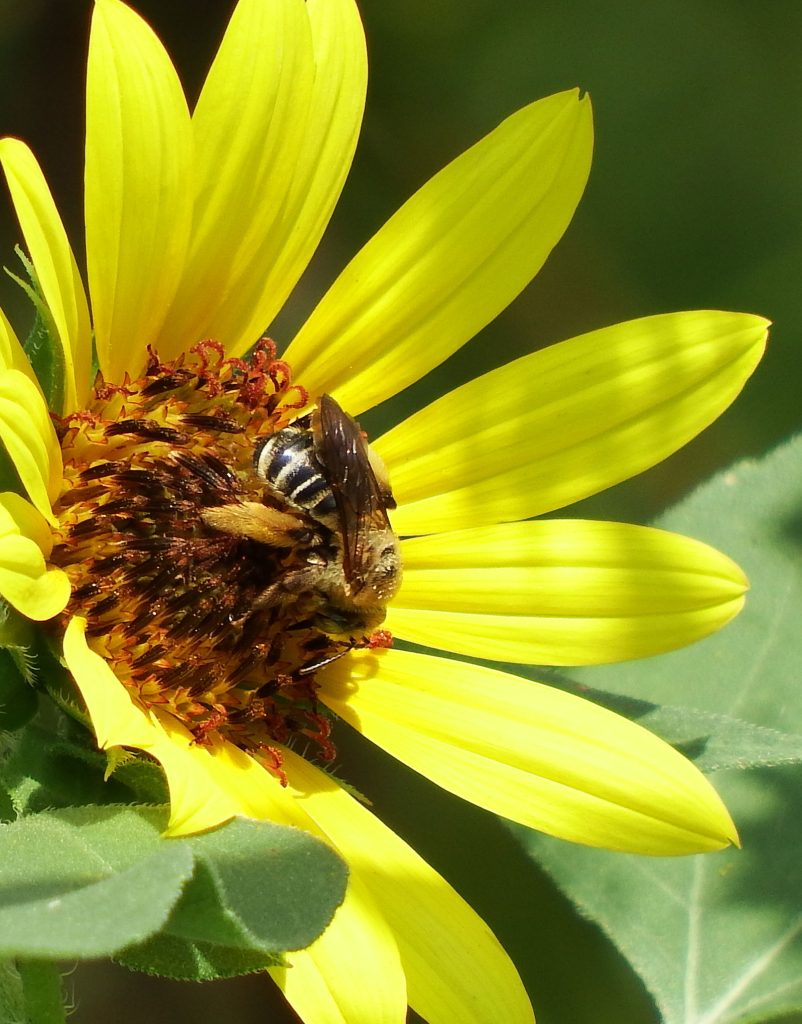
This is a sunflower bee, appropriately on a sunflower. They are coveted by sunflower farmers and are raised commercially.
All female bees have pollen collecting hairs called scopae. When you are trying to identify a bee, seeing where the hairs are gives you a big clue. Leafcutter bees have hairy bellies but clean legs (see the photo at the top of this post). Those huge hairy hind legs are what made this lady definitely not a leafcutter and also easy to identify. Sunflower bees have legs so hairy they look like they are wearing gaucho pants.
Bees collect pollen almost inadvertently. As they fly, the scopae acquire a static charge, much the way a balloon does when you rub it on your head. This static charge makes things stick. Flying between flowers, bees pick up a static charge, then land on a flower. The pollen is drawn to the hairs because of the charge. The bee is happy to have collected all the pollen because it’s packed with protein for her offspring. She will lay her eggs in a cavity and each egg will get a pollen loaf so the larva can eat enough to transform into an adult bee. The flower is happy because the bee carried some of her pollen off and left her some pollen from another plant she can use to make her own seed.
I didn’t get photos of many critters during my prairie sit, but I did find some lovely natives you won’t see everywhere.
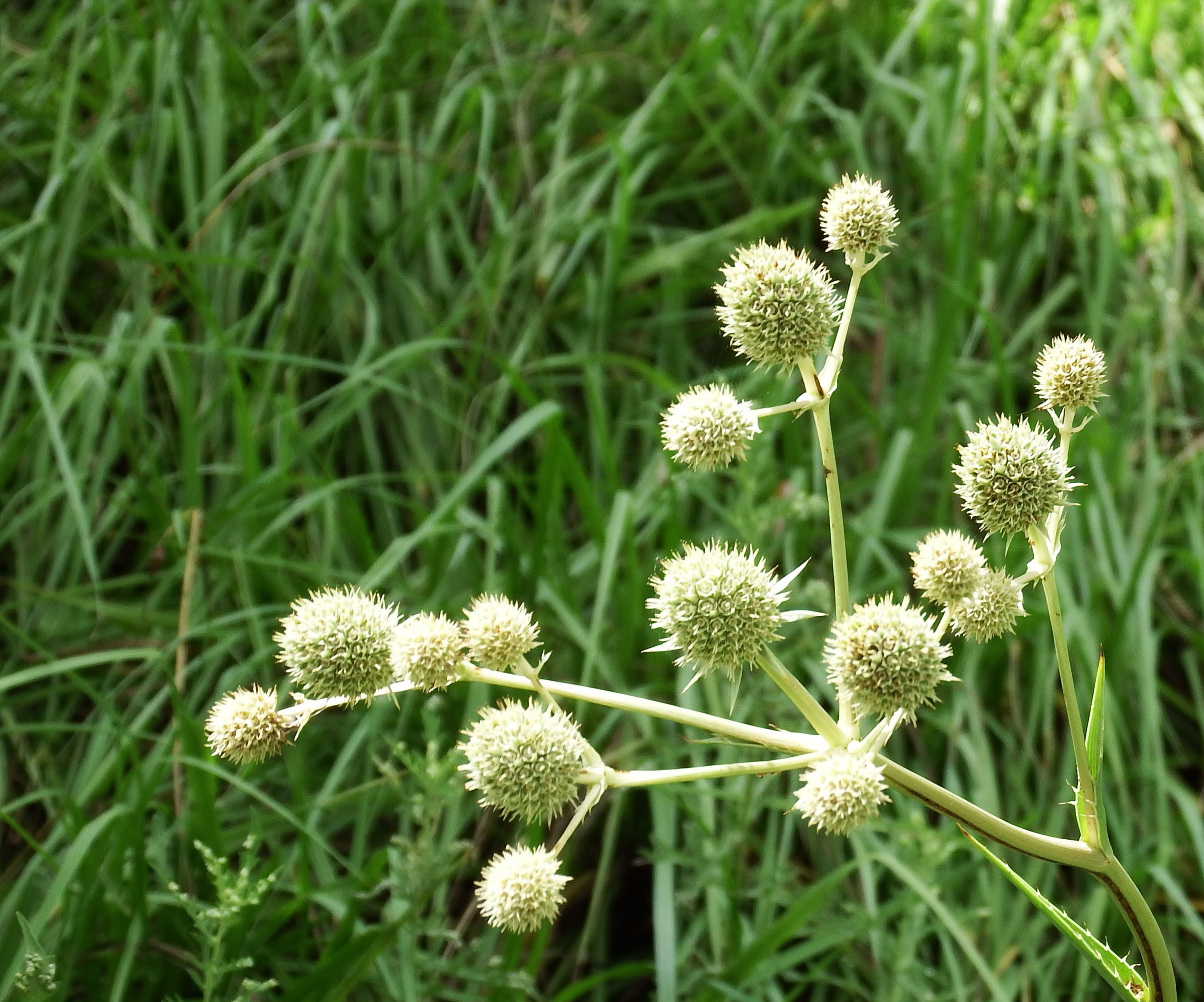
Rattlesnake master. This is supposed to be a power pollinator, but the insects in our Park haven’t gotten the memo.
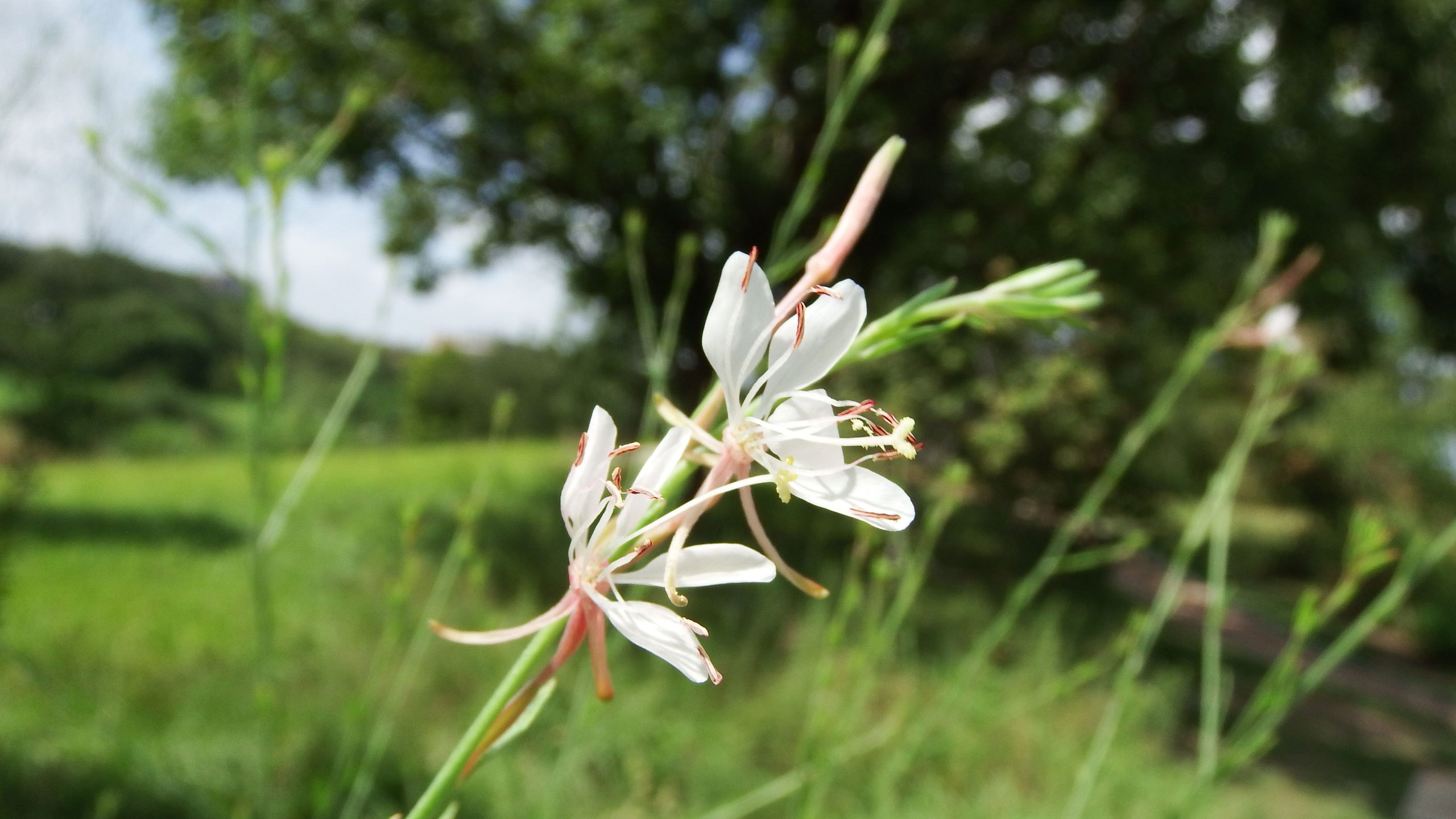
Prairie Gaura. You will see this in a few places in the Park. It’s more or less the same plant sold in nurseries all over town, except prairie gaura is about eight feet tall and the flowers are light pink to white.
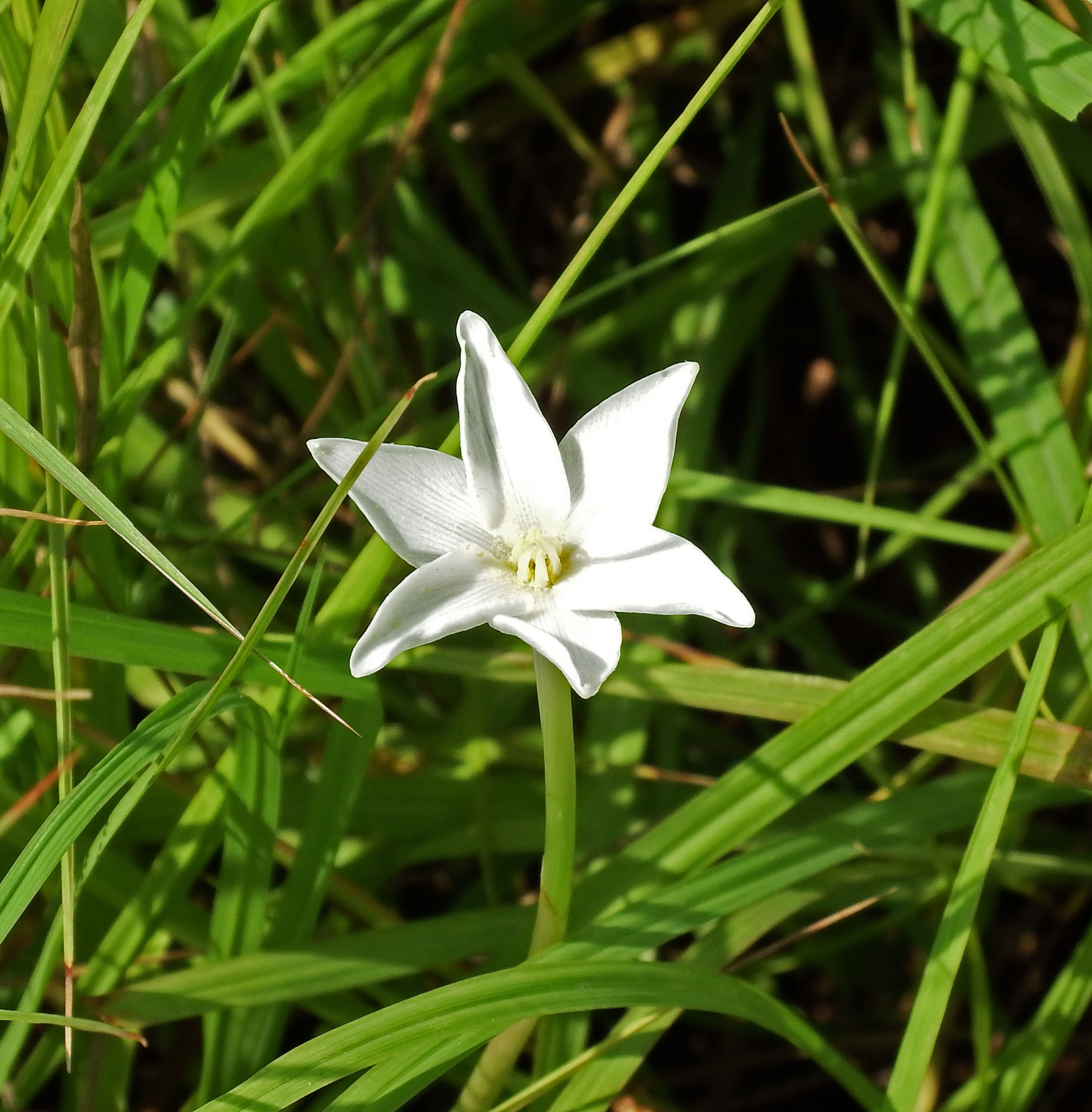
I was in the prairie on Monday and we had a good soaking rain on Sunday. So, it wasn’t entirely surprising to find a lovely rain lily poking her head up.

